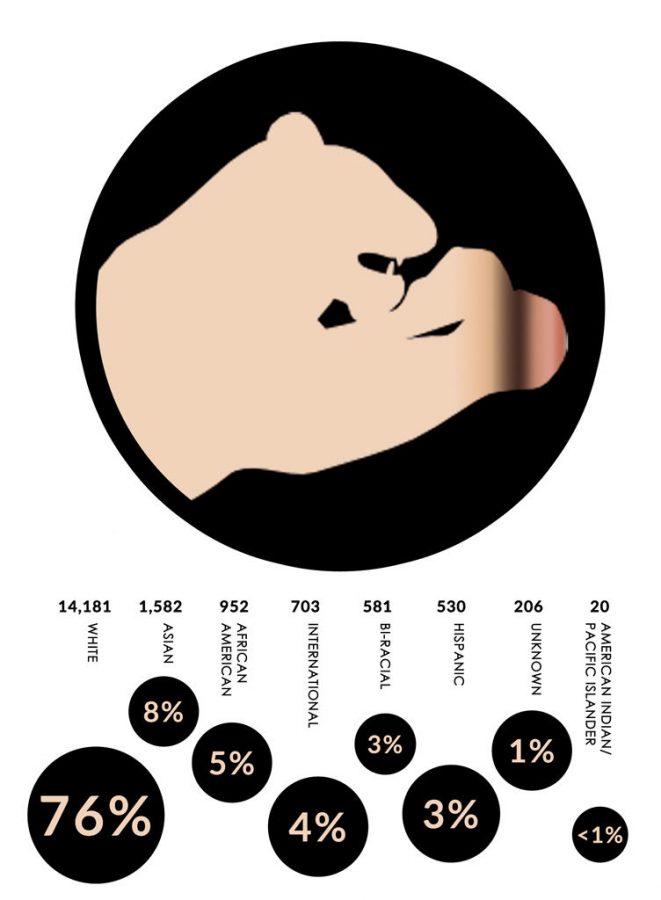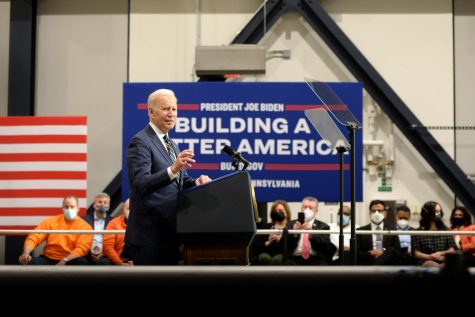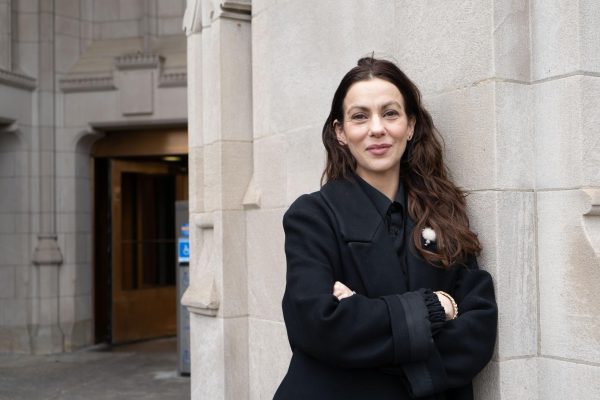Strides for difference: After new hire Pitt examines its diversity efforts
June 30, 2015
Pamela Connelly wants to make Pitt a more diverse campus, but she doesn’t have a plan — yet.
“We can’t say today, ‘We have this plan that’s going to happen,’ because we are still trying to piece together everything we have and get all the information in one place,” Connelly, Pitt’s new top diversity official, said.
In May, Pitt officials appointed Connelly to the new position of associate vice chancellor for diversity and inclusion. Once she’s up to speed, Connelly said, she will oversee diversity efforts across the University. Although she can’t yet give specifics, Connelly hopes to make Pitt a more inclusive, respectful community.
According to Chancellor Patrick Gallagher’s five-year plan for the University, which he outlined in a June 19 report to the Board of Trustees, this means Connelly will, in part, work to expand study abroad opportunities and to recruit and retain a diverse student body and staff.
At Pitt, diversity means equal opportunities for all individuals and a strict nondiscrimination policy, according to its human resources website.
Connelly’s appointment comes not long after 22 diversity-based student groups joined in March to create the Student Diversity Council, a coalition promoting diversity awareness and acceptance on campus.
The Student Diversity Council formed partly in response to local and nationwide movements such as the Black Lives Matter protests against police brutality and the Fight for 15 rallies for a higher minimum wage. Pitt has not yet certified the Council as an official student group, but its leadership plans to make it an official student group by the fall.
Zach Schaffer, a member of the Council’s steering committee, which is working to make the Council official, said that he’s “very much in favor” of Connelly’s appointment and that he has reached out to her, on behalf of the Council, to invite her to work with them to promote diversity on campus.
Connelly’s office will work closely with the Student Diversity Council after it becomes a formal student group, she said, adding that she and Schaffer have made plans to discuss the particulars of their future working relationship later this summer.
Although her plans are still tentative, she said, she is considering holding a series of town hall meetings at which students can directly communicate their concerns.
Schaffer, who’s also the president of the Hillel Jewish Students Union, hopes that the Council will become an effective liaison between students and administration.
“When we come across problems that we think the administration needs to address … we want to represent all the students, to go to the administration and discuss the changes we think they need to make,” Schaffer said.
One problem the Council, and now Connelly, could handle, according to Ernest Rajakone, a 2015 Pitt alumnus who was involved in the Council’s launch, was last year’s Residence Life poster controversy.
In December, The Pitt News reported that Residence Life ended a diversity-promoting poster campaign after students criticized the campaign for its lack of inclusivity and called for its removal. At the time, student Linsey Eldridge said the campaign “trivialized racial stereotypes.”
Kathy Humphrey, vice chancellor and chief of staff, helped create Connelly’s new position.
She and Gallagher created this new position because Gallagher, who took office in 2014, has renewed Pitt’s decades-long focus on diversity. Connelly’s new position was created now, rather than years ago, because Gallagher has made acceptance and awareness of diversity one of his administration’s top priorities, Humphrey said.
According to Schaffer, Pitt’s student body’s relative lack of racial diversity will be Connelly’s biggest challenge.
“There needs to be a clearer focus on having diverse students coming to Pitt, attending Pitt,” Schaffer said.
Connelly agreed that recruiting diverse students is essential and indicated that she would make that issue a priority, writing in an email that “[t]he recruitment and retention of a diverse student body is critical and a high priority to the University.”
According to Pitt’s 2015 Fact Book, 14,181 (75.6 percent) of the 18,757 undergraduates at Pitt’s main campus in Fall 2014 were white and non-Hispanic. According to the 2010 Census, 64.8 percent of all Pittsburghers fell into the same category.
Connelly said that while racial diversity is an integral part of diversity as a whole, the term also encompasses diversity of gender, sexuality, religion and other facets of an individual’s identity.
Connelly said the transition to her new position has been “both very exciting and very challenging.”
“It’s been helpful that I [already] know some of the key partners,” Connelly, who has a long history at Pitt, said.
Connelly graduated from Pitt’s law school in 1995, and in 2002, Pitt’s Office of General Counsel hired her to provide legal services to the University. In that position, she specialized in discrimination cases involving equal opportunity employment, Americans with Disabilities Act compliance, Title IX and civil rights laws.
Connelly’s office will oversee Pitt’s Title IX compliance efforts, including investigations of alleged sexual misconduct, although the offices of Human Resources and Student Conduct will continue to handle most other discrimination complaints.
Connelly’s supervision of Title IX compliance will follow up on Pitt’s recent efforts to raise awareness of sexual misconduct, including a national survey of students on sexual assault. The Association of American Universities is distributing the survey, which follows a February memo from Chancellor Gallagher which emphasized that sexual violence “has no place” at Pitt.
Melanie Harrington, a diversity expert, said she admires Connelly’s desire to integrate diversity into Pitt’s community.
Harrington, President and CEO of Vibrant Pittsburgh, a nonprofit dedicated to diversifying Pittsburgh’s workforce, said college students need to get used to living and working in a diverse environment to help them adjust to the increasingly diverse global workforce.
“Are we creating an attractive enough environment for young people who want to go to school at Pitt?” Harrington said. “Are we creating an attractive environment for young people from Pitt who want to work in Pittsburgh?”
Humphrey agrees that Pitt students need to experience diversity in college so they can adjust more easily to the world outside the University.
“What we need to do here is to make sure that we’re providing an environment and a platform for students to stand on and learn in,” Humphrey said. “So that when they leave Pitt, they’re accustomed to a diversity of thought, a diversity of people.”








